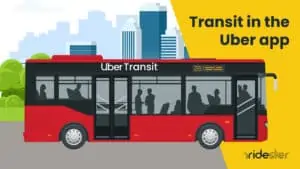Key Takeaways
- Amazon Logistics, launched in 2015, ensures fast global package delivery using a sophisticated network and technology.
- Drivers, including Amazon Flex, DSPs, and third-party couriers, are crucial for efficient last-mile package delivery.
- Flexible scheduling and competitive compensation are key benefits for drivers within Amazon’s expansive logistics operation.
- Amazon’s delivery innovation, including drone and electric vehicle use, sets new industry standards for efficiency.
- What is Amazon Logistics?
- How Amazon Logistics Works
- The Role of Drivers in Amazon Logistics
- Becoming a Driver for Amazon Logistics
- Compensation and Benefits for Drivers
- Challenges and Opportunities for Amazon Logistics Drivers
- Amazon Logistics and Its Impact on the Delivery Industry
- Future Trends in Amazon Logistics
- Wrapping Up
What is Amazon Logistics?
With today’s pace, customers expect faster delivery of their packages. After all, online shopping should be more reliable for them than going to the store around the corner.
So, how can that happen? That’s what Amazon Logistics does.
Amazon Logistics ensures packages arrive fast at the person’s doorstep. Every year, this delivery service processes over four billion delivery orders. It manages to do that through its delivery network, operating 24/7.
Amazon Logistics isn’t a local-only service. It has a global delivery network. In total, Amazon’s branded fleet includes tens of thousands of semi-trucks and vans. It also contains over 100 aircraft for worldwide delivery.
Launched in 2015, the Amazon Logistics service aims to shorten shipping duration. Offered for third-party sellers, its primary goal is to improve customer satisfaction.
Such efficiency is almost impossible for sellers to achieve on their own. That’s because it involves several intricate operations. This includes receiving goods, sorting inventory, warehousing, and delivering.
How Amazon Logistics Works
Amazon Logistics operates like clockwork, day and night all year long. It offers a same-day delivery and shipping option for its prime members.
Here’s how it works:
- Automated Sorting Centers: Amazon’s local warehouses and delivery stations act as the starting point for ordered packages.
- Routing Intelligence: Not only does the brilliance of the process lie in the “where,” but also the “how.” With advanced tracking and routing algorithms, Amazon Logistics ensures the smartest routes.
- Delivery Services: Drivers are working independently or through third-party Amazon-partnered delivery companies. Some of the major delivery services under contract with Amazon are UPS and FedEx.
- Flex Drivers and Gig Workers: To ensure a more flexible delivery system, Amazon allows gig workers to join its delivery team. Such a complex network of delivery drivers helps Amazon apply its last-mile approach.
- Customer-Focused Tracking: Amazon prioritizes transparency for an enhanced customer experience. This can be achievable via real-time order tracking. It allows customers to keep an eye on the order from the warehouse to their doorstep.
The Role of Drivers in Amazon Logistics
In Amazon Logistics, drivers are like ambassadors, getting in direct contact with customers. They ensure seamless delivery of packages for extra convenience.
The Drivers’ job involves loading packages at distribution centers and executing last-mile deliveries. Their day-to-day responsibilities also include navigating the routes generated by advanced algorithms.
That said, there are three types of driver roles within Amazon Logistics, which are:
1. Amazon Flex Drivers
Amazon Flex drivers are independent individual drivers. They use their vehicles to pick up and deliver packages to customers. You can think of them as the core of Amazon Logistics. That’s because they introduce the element of flexibility to the process.
What sets Amazon Flex drivers apart is their adaptability. It allows them to adjust their schedules based on the changing delivery demands. Through their services, Amazon can meet different delivery requirements efficiently.
2. Amazon Delivery Service Partners (DSP)
DSPs represent independent businesses operating a fleet of delivery vehicles within Amazon Logistics. They contribute hugely to the localized delivery efficiency, managing their teams of drivers.
Such services ensure punctual deliveries within their designated service areas. As such, they play a vital role in extending Amazon’s reach throughout all regions.
3. Third-Party Courier Service
Third-party courier services can also be a part of Amazon Logistics’ delivery system. They help expand delivery capacity and enhance speed with a broader delivery network.
Such valuable partners bring more resources to Amazon’s delivery operations. They contribute in a great way to the service’s efficiency as well.
Becoming a Driver for Amazon Logistics
Becoming a driver for Amazon Logistics can be a great opportunity if you’re looking for a full-time job.
To be eligible to drive an Amazon-branded delivery van, you need to be 21 or older. You must also have a driver’s license and a spotless driving record. Plus, you should be able to lift and carry packages up to 50 lbs.
The Application Process
It’s a seamless process done online through Amazon’s website. On their webpage, you get to view all current opportunities near your location. Here are more details about the application process and how it goes.
- Online Application: Select the job that suits your location preferences. Then, fill out the online form for it. Such a form contains simple yes or no questions, along with fields to enter your contact info.
- Application Screening: Your application undergoes a screening to assess how suitable you are for the role.
- Online Interview: When the HR team decides you’re suitable for the job, they send you an email. Inside, you should find a link to your online interview.
- In-Person Interview: After a successful initial interview, you receive another email. This time, it contains details about your next in-person interview.
- Drug Test: Once hired, you’ll need to take a drug test, which is usually a standard five-panel one.
- Amazon Profile: In this step, they’ll ask you for the information needed to set up your Amazon profile.
- Background Check: As a successful candidate, you’ll need to pass a background check. This phase can be crucial, as the check goes back up to seven years.
- Amazon Training: It’s a short three-day program. It covers aspects like technology utilization, secure package handling, and customer service standards.
- Starting the Job: Once training is over, you’re ready to hit the road.
Compensation and Benefits for Drivers
Amazon Logistics provides competitive compensation and benefits to attract its driver workforce.
Depending on the type of driver you are, your pay may vary. Here’s what you should expect working as the following:
1. Amazon Flex Drivers
Through Amazon Flex, you enjoy flexibility. Your earnings change based on how many deliveries you complete.
So, the more deliveries you fulfill, the higher your pay. This allows you to control your income and align it with your availability.
According to Zip Recruiter, the average rate of an Amazon Flex driver is $18.45 per hour. Such an estimate varies depending on the time spent delivering the package. On the whole, you should expect to earn between $18 and $25 hourly.
2. Delivery Service Partner (DSP) Drivers
Working for a DSP, you receive stable pay (fixed hourly rate). Whether a full-time delivery associate or a part-timer, you’re eligible for a decent compensation and benefits package. This includes paid training, overtime, paid time off, health insurance, and 401K.
Your pay may depend on the agreement between Amazon and the DSP. It also varies according to the location where the DSP operates and your delivery performance. In all cases, it falls within the same range as an Amazon Flex driver.
3. Third-Party Courier Service Drivers
As is the case with DSP drivers, the pay for Courier service drivers depends on the specific arrangements between Amazon and the company itself. Usually, such companies negotiate their rates with Amazon based on their business models.
Challenges and Opportunities for Amazon Logistics Drivers
As an Amazon Logistics driver, expect to encounter many challenges and opportunities. Check out some of them.
Challenges for Amazon Logistics Drivers
Any other comes with challenges and difficulties. Yes, working as an Amazon delivery driver can be a rewarding occupation. Yet, there are downsides as well. Here are a few of the aspects to consider.
- Managing high workloads and time-sensitive routes
- Lifting packages weighing up to 50 lbs.
- Meeting demanding delivery quotas
- Having strong organizational skills and adaptability
- Working in extreme heat, cold, wind, or snow
Opportunities for Amazon Logistics Drivers
Despite the challenges, there are many opportunities. As an Amazon delivery driver, you get to enjoy some features in return, which are:
- Flexible schedules, especially with programs like Amazon Flex
- Potential for income growth, particularly for independent Delivery Service Partners (DSPs)
- Building a professional network, paving the way for more future opportunities
- Gaining driving and delivery experience, especially with a company as reputable as Amazon
- Getting your needed daily dose of physical activity
Amazon Logistics and Its Impact on the Delivery Industry
The delivery service is one of the most crucial aspects of any e-commerce business. The punctuality and efficiency of deliveries are determining factors. As such, they set apart one company from the other.
Amazon Logistics and its management strategies have revolutionized the delivery industry. They’ve also affected the e-commerce sector. Such an effect contributes to the elevation of customer expectations. It also encourages competitors to step up their game.
Mainly, this enormous company challenged the traditional delivery models. It introduced a new meaning for speed and competence. With a clear focus on innovation, Amazon works hard to improve its tracking algorithms. It also strives to incorporate cutting-edge technologies.
All in all, it’s quite challenging to maintain Amazon’s quality of service. Whether it’s next-day or same-day deliveries, it’s not easy to keep up. That’s especially true with today’s customers who always search for quick solutions.
Future Trends in Amazon Logistics
Amazon always strives to introduce and incorporate new technologies into its logistics network. Among the most vital of these is the increased integration of robotics and AI. As a result, it contributes to enhancing efficiency across warehouses and last-mile delivery.
Amazon Logistics has the ambition to reach more regions. Driven by the commitment to reduce delivery time, such global expansion is inevitable.
As for the expansion of drone delivery, expectations are high. This amazing service offers rapid and cost-effective solutions, especially for short-distance deliveries. Over time, drones may soon become a more common feature in Amazon’s logistics network.
Having said that, sustainability is another aspect that Amazon takes seriously. The company continues to explore healthier practices. This includes electric delivery vehicles and non-polluting packaging solutions.
On the whole, the future of Amazon Logistics is bright. As they promise to connect the world, they set new standards for speed, innovation, and sustainability.
Wrapping Up
Amazon works on introducing innovative services night and day to expand its existence. Amazon Logistics is a living example of that.
So, the question “What is Amazon Logistics?” doesn’t have a simple answer like “It’s a delivery service.” Amazon Logistics isn’t an ordinary delivery service. It’s a dynamic force that continues to reshape the future of logistics.
That’s why the role of Amazon Logistics drivers is vital. They navigate many challenges, such as harsh weather and delivery quotas. Yet, they also get to enjoy the several opportunities presented to them.
In all cases, a person can never go wrong working with an evolving network that offers a world of possibilities.






